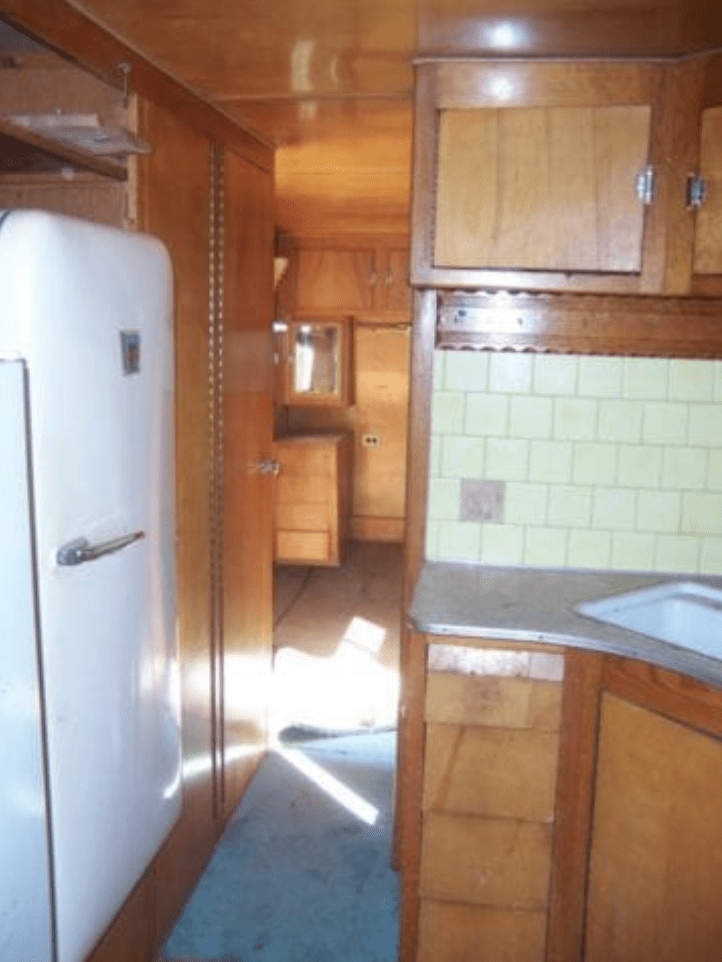Editor’s Notebook: Trailers remain an important housing option
Published 12:15 am Saturday, February 22, 2025

- The interior of a New Moon trailer.
I became a fan of trailer houses by accident, partly thanks to a CIA officer.
Trending
Moving from Gig Harbor, Washington to Laramie, Wyoming for college in 1981 was a last-minute choice. Partly not to give up my shaggy black dog, Clancy, I rejected conventional student housing. I rolled into town with my parents’ 24-foot travel trailer, only to come up empty on a place to park it. Dad reached deep into his Rolodex and found an old spy friend from his days at the Pentagon, a friendly man who retired to Laramie. He called around and found me a patch of dirt out by the main Union Pacific tracks.
Within sight of the ruins of Fort Sanders where one of my great-great-grandfathers was stationed while defending the 1866-69 construction of the first cross-continental railroad, the spot where I lived for the next three school years was exposed to screaming blizzards at 7,200-feet elevation. I eventually built a strong wooden stockade on the windward side to partially shield the trailer from the prevailing westerly gales.
Maybe Dad figured I’d give up and move to town by Thanksgiving. No doubt I should have. The rinky-dink toilet froze up by about October each year. It was only thanks to my happy and hilarious neighbor Chris Amend that I had a place to go to the bathroom and shower, making a 50-yard dash across the Siberian wasteland of our shared yard. And for all I know, maybe I’m a ghost, having long-ago died in a space heater fire.
Trending
But I loved it, notably after Chris moved in with his girlfriend (now wife), Jenny, and I bought his classic land yacht. I wish I still owned it. It was one of my all-time favorite residences — cozy and comfortable with real wood veneer paneling throughout. It was basically the same as the 1953 36-foot Redman New Moon model used in the Lucille Ball-Desi Arnaz hit movie “The Long, Long Trailer,” about a young couple’s misadventures towing an RV much bigger than usual back then. (Nowadays as I walk in Cape Disappointment State Park in the summer, it’s not uncommon for RVs the size of locomotives to roar past.)
The Sou’wester Lodge in Seaview has built a business around renting out restored classic trailers to tourists. It doesn’t look like they have any New Moons, but a trailer that most closely resembles mine goes for $248 a night in high season. The New Moon in Lucy’s movie sold for $5,345 brand new.
My older brother Greg used to be a U.S. Navy chief petty officer whose first-rate mechanical skills led to a much longer than usual posting at Naval Air Station Key West. Visiting him in the late 1980s, I was struck with the impression that the island was like an M&M candy — a glossy exterior near the saltwater, surrounding a dark interior of cut-rate housing for the working people tending to the needs of a tourist economy.
The same pattern has been true in our counties here, with more affluent homes clustered along the ocean, bay and river. It used to be that you didn’t have to go very far inland to find much more affordable housing options. While this remains true to some extent, it’s rarer to find real bargains anywhere.
Housing shortage
Asked at The Daily Astorian during my 1991 job interview to identify the biggest issue this area faced, I answered “growth.” Such a spectacular and interesting place couldn’t help but rapidly expand its population. The key would be finding ways for those with a long-term commitment to the place to be able to still afford living here.
After a couple of decades when our vacation-home inventory gradually increased but the year-round population didn’t budge much, my growth prediction is finally coming true. There are half a dozen new houses in various stages of completion in my neighborhood. A nice Southern California couple just moved into one; I apologizing on behalf of our recent record-setting cold. Being from California is not a sin.
Just as dramatic in its own way as the surge in stick-built houses, some unsightly trailer parks are being transformed in our area. A high school friend of my daughter’s lived in one of these. Located well away from the shoreline in upscale Seaview, its narrow oval lane was dismal, muddy and neglected. And yet it was an affordable home in a place that was becoming steadily less so even a decade ago. Driving by it this month, it barely resembles the place where I did taxi service for teenagers. Most of the old trailers are gone and being replaced by tidy cookie-cutter houses of maybe 500 square feet. Much better-looking, but I confess to having mixed feelings.
Challenges
New challenges faced by trailer park residents are well documented. For example, the Beacon RV Park on Port of Ilwaco property became the focus of regional news coverage when new owners ran afoul of state tenant-protection laws. A neglected eyesore for decades, the owners wanted to convert it into something more profitable and appealing to visitors. But this would have meant loss of a place for people to park the kind of RV where I initially lived in Laramie.
What some see as a crappy RV can be a cherished home.
Cascade PBS freelancer Natalie St. John recently delved into these issues, pursuing a news beat she also covered during her years at the Chinook Observer. “Priced Out: Fear and resistance in WA mobile home parks” (tinyurl.com/PBS-WA-trailers), reports on the increasingly common issue of a corporation buying the land on which privately owned RVs are parked and then raising the space rent to punishing levels.
It is inevitable that many more RV parks will be gentrified and residents left to find other accommodations — a deeply fraught task in a region that has been “discovered.” No one should have to live in substandard housing, especially when the rent leaves them too little to subsist on. Most local communities are still a ways from Key West-style development, but formerly affordable places are becoming ever less so.
Matt Winters is the regional editor of The Astorian, the Seaside Signal and the Chinook Observer.






